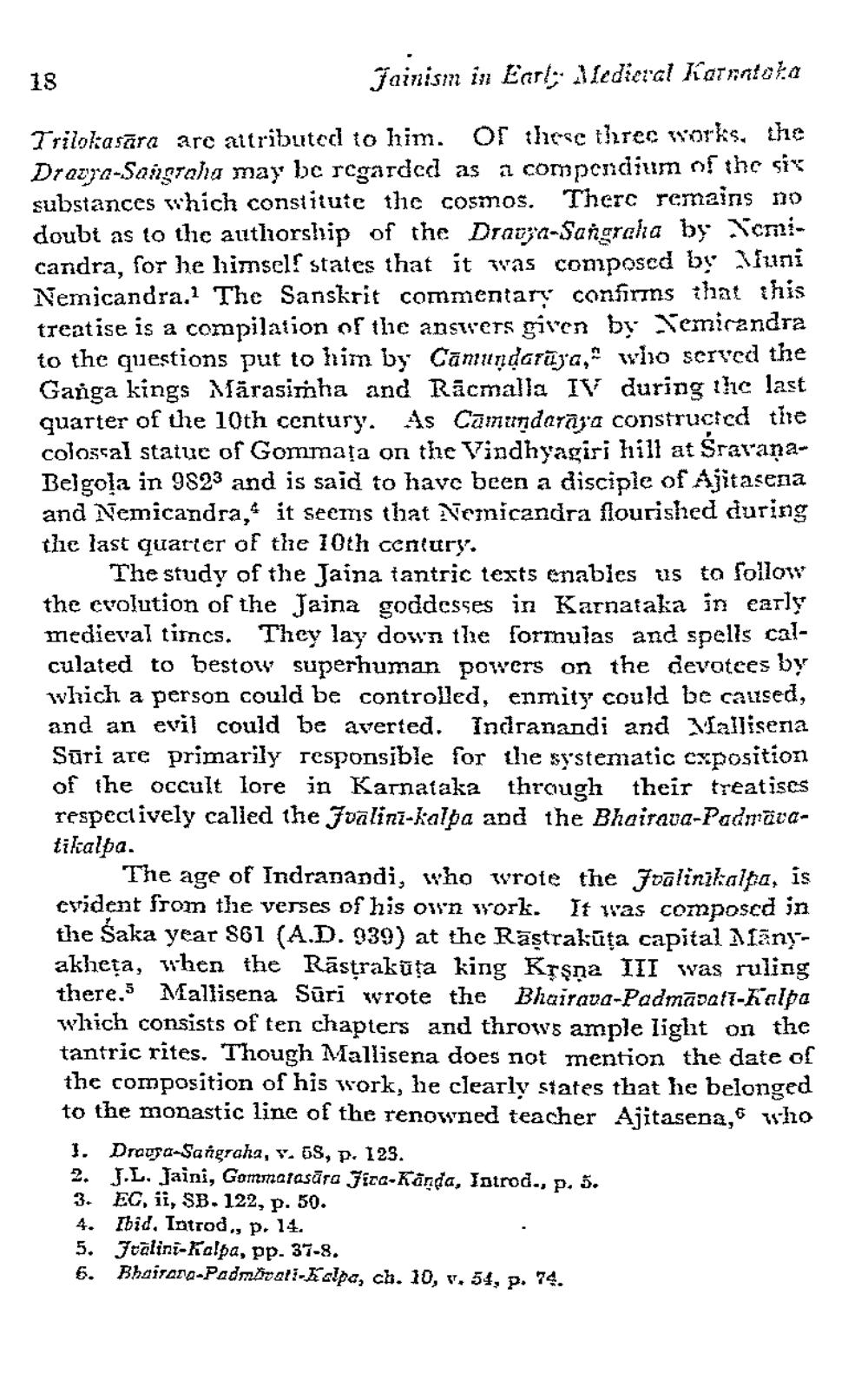________________
18
Jainism in Eart. Medieral Karnatoka Trilokasāra are aitributed to him. Or these three works, the Drazza-Saugroha may be regarded as a compendium of the six substances which constitute the cosmos. There remains no doubt as to the authorship of the Dravza-Sangraha by Xcmicandra, for he himself states that it was composed by Vfuni Nemicandra.1 The Sanskrit commentary confirms that this treatise is a compilation of the answers given by Semirandra to the questions put to him by Camındarāja, who served the Ganga kings Märasimha and Rácmalla IV during the last quarter of the 10th century. As Camundarara constructed the colossal statue of Gommața on the Vindhyagiri hill at SraranaBelgola in 9823 and is said to have been a disciple of Ajitasena and Nemicandra,- it seems that Nenicandra flourished during the last quarter of the 10th century.
The study of the Jaina tantric texts enables us to follow the evolution of the Jaina goddesses in Karnataka in early medieval times. They lay down the formulas and spells calculated to bestow superhuman powers on the devotees by which a person could be controlled, enmity could be caused, and an evil could be averted. Indranandi and Mallisena Sūri are primarily responsible for the systematic cxposition of the occult lore in Karnataka through their treatises respectively called the Jvalinz-kalpa and the Bhairava-Padmavatikalpa.
The age of Indranandi, who wrote the foalinikalpa, is evident from the verses of his own work. It was composcd in the Śaka year 861 (A.D. 939) at the Rāstrakūta capital Alanyakheța, when the Rāstrakūta king Krşņa III was ruling there.5 Mallisena Sūri wrote the Bhairava-Padmāsafi-Kalpa which consists of ten chapters and throws ample light on the tantric rites. Though Mallisena does not mention the date of the composition of his work, he clearly states that he belonged to the monastic line of the renowned teacher Ajitasena, who 1. Droupa-Sangraha, v. 63, p. 123. 2. J.L. Jaini, Gommatasura Jita-Karda, Introd., p. 5.
EG, ii, SB. 122, p. 50.
Ibid, Totrod., p. 14. 5. Jtalini-Kalpa, pp. 37-8. 6. Bhairang-Padmövati-Ialoa, ch. 10, v. 54, p. 74.




